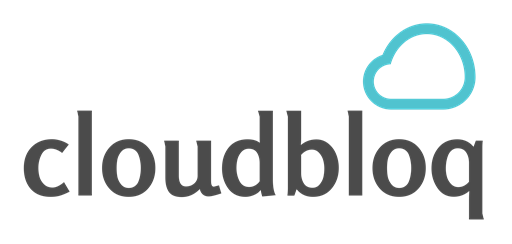Ultimate Cloud Migration Strategy: A 2025 Framework for CTOs
The cloud is no longer a strategic option; it is the mandatory backbone of modern enterprise. Yet, a staggering 83% of enterprises report their cloud migration efforts have either failed to deliver expected ROI or resulted in significant, unforeseen cost overruns (Source: Flexera 2024 State of the Cloud Report).
For CTOs and IT Directors leading large enterprises in Finance, Healthcare, and SaaS—where data security, regulatory compliance, and near-zero downtime are non-negotiable—a casual “lift-and-shift” approach is a recipe for disaster. You are not just moving servers; you are transforming your entire operational model.
The core problem is a missing or outdated cloud migration strategy. Leaders are wrestling with:
- Unforeseen Cost Spikes: Cloud waste from over-provisioning and lack of FinOps governance.
- Compliance Risks: Ensuring sensitive data meets global and regional mandates like GDPR and HIPAA in the new environment.
- Business Disruption: Lengthy, high-risk migration windows leading to unacceptable downtime.
This comprehensive guide, built on CloudBloq’s decade of experience, provides a strategic, 4-Phase cloud migration framework 2025 designed to solve these precise pain points. We will map the process from initial discovery to continuous optimization, ensuring your move to the cloud delivers on its promises of agility, innovation, and predictable cost reduction.
The High Cost of a Poor Cloud Migration Strategy
The enterprise IT landscape is defined by complexity: monolithic legacy applications, intricate application dependencies, and strict regulatory mandates. In this environment, an incomplete cloud migration strategy immediately translates into risk and wasted capital.
The New Cloud Migration Pain Points for Enterprise Leaders

A successful migration in 2025 requires moving beyond the technical “how” and focusing intensely on the business “why” and the governance “what.”
CloudBloq 4-Phase Cloud Migration Framework 2025
A successful, scalable migration for enterprises requires a structured, iterative, and risk-averse approach. CloudBloq’s strategic framework is divided into four distinct phases.
Phase 1: Assess & Align – The Foundation for Success
Before moving a single byte of data, you must establish an authoritative baseline and a clear business mandate. This phase is crucial for mitigating the risk of cloud migration pain points.
Comprehensive Application Portfolio Rationalization (APR)
This goes far beyond a simple inventory. You must categorize every application and workload based on business criticality, complexity, technical debt, and interdependencies.
- Discovery: Use automated tools (like Azure Migrate or AWS Migration Hub) to map all assets and their runtime dependencies.
- Classification: Score each application (1-5) on its business value and technical complexity. Prioritize high-value, low-complexity applications for initial migration waves.
- The 6 R’s of Migration: Determine the optimal path for each application.

FinOps and Target TCO Modeling
The biggest risk is budget bloat. Implement FinOps for cloud from day one.
Expert Insight: “A proper FinOps strategy mandates resource tagging, real-time cost monitoring, and rightsizing before migration. Failure to decommission on-premise hardware creates a double-cost scenario that destroys ROI.”
- Baseline Cost: Calculate the total cost of ownership (TCO) for your current environment (hardware, power, cooling, licensing, labor).
- Target Cost: Model a TCO for the cloud environment based on the ‘6 R’ decisions, factoring in reserved instances and usage optimization.
- Compliance Readiness Check: Mandate a full review of all workloads handling sensitive data against GDPR, HIPAA, CCPA requirements, building security controls into the landing zone design.
Phase 2: Design & Plan – The Blueprint for Execution
This phase translates your strategy into a detailed, secure, and executable blueprint.
Secure and Compliant Landing Zone Design
Your cloud environment must be built with enterprise-grade security and compliance at its core.
- Identity and Access Management (IAM): Implement a robust, unified IAM system (e.g., Azure AD or AWS IAM) using the principle of least privilege.
- Network Architecture: Design a hybrid network (VPN, Direct Connect, ExpressRoute) to ensure seamless, secure connectivity between on-premises and cloud resources during the transition.
- Infrastructure as Code (IaC): Use tools like Terraform or CloudFormation to provision your new infrastructure. This ensures consistency, repeatability, and version control—the bedrock of the enterprise cloud adoption model.
Phased Migration and Wave Planning
Do not attempt a “Big Bang” migration. A phased, iterative approach drastically reduces risk.
- Pilot Phase (Wave 1): Migrate 1-2 non-critical, low-complexity applications (Rehost/Replatform). This validates your tools, processes, and team readiness.
- Phased Waves (2+): Group subsequent applications based on their dependencies. Migrate entire stacks (App, DB, Storage) together to minimize integration risks.
4.3. Data Migration Strategy and Integrity
Moving your data—especially massive databases in the Finance and Healthcare sectors—is arguably the most delicate operation.
- Methodology: Select between Online Migration (minimal downtime, continuous sync) or Offline Migration (best for massive datasets with high-latency requirements).
- Data Validation: Implement a multi-step data integrity check (checksums, record counts) before and after cutover to satisfy auditors and compliance teams.
Phase 3: Execute & Validate – The High-Impact Transition
This is where the plan becomes reality. The focus here is on automation, testing, and minimizing business disruption.
Automated Execution with DevOps/DevSecOps
Manual migration is slow, error-prone, and unsustainable for enterprise scale.
- Pipeline Setup: Implement CI/CD pipelines to automate the build, test, and deployment of migrated applications.
- DevSecOps Integration: Embed security testing and compliance checks directly into the migration pipelines (shifting left). Tools like vulnerability scanners and compliance automation should run on every build.
- Testing and Validation:
Go-Live and Decommissioning
The cutover must be a surgical, scheduled event with a clear trigger for rollback.
- Zero-Downtime Cutover: Employ techniques like blue/green deployment or DNS flip to minimize service interruption.
- Shadow IT Shutdown: Immediately after a successful validation period, decommission the corresponding on-premises hardware. This is essential for realizing TCO reduction and preventing the hidden cost of parallel infrastructure.
Phase 4: Operate & Optimize – The Continuous Value Realization
Migration is a beginning, not an end. The final phase is about unlocking cloud-native value through continuous improvement and cost governance.
Establishing a Cloud Center of Excellence (CCoE)
The CCoE is a cross-functional team (IT, Finance, Security, Business Leaders) responsible for driving cloud adoption, governance, and standards across the entire organization.
- Mission: Set policies, educate teams, manage the cloud vendor relationship, and enforce FinOps best practices.
- Continuous FinOps: Implement real-time cost monitoring with alerts for budget anomalies. Leverage autoscaling, reserved instances, and committed-use discounts to maximize cost efficiency. (Secondary Keyword: FinOps for cloud)
Modernization and Innovation Pipeline
Now that your assets are in the cloud, you can leverage cloud-native services for innovation.
- Refactor Roadmap: Prioritize high-value applications for post-migration modernization (e.g., moving from containers to serverless, integrating AI/ML services).
- Security Posture Management (CSPM): Implement tools to continuously scan your cloud configuration for security misconfigurations and compliance violations.
Common Cloud Migration Mistakes to Avoid
Even with the best plan, enterprises often fall into predictable traps. Avoid these common cloud migration pain points:
- Ignoring Inter-Application Dependencies: Migrating an application without its required database or dependent API services guarantees an outage. Always migrate dependent groups together.
- Lack of Decommissioning Plan: Failing to shut down the old data center assets (power, cooling, hardware) on a firm timeline. This is the primary driver of the double-spend trap.
- Underestimating the Data Transfer Challenge: Moving petabytes of regulated data (e.g., patient records under HIPAA) over the public internet is slow and risky. Leverage dedicated data transfer services (like AWS Snowball or Azure Data Box) and high-speed dedicated network links.
- Neglecting Cultural Change: The shift requires upskilling your teams in cloud architecture, DevOps, and FinOps. Invest in training; otherwise, you’re merely moving legacy problems to a new infrastructure.
Tools & Technologies for Your 2025 Framework
A successful cloud migration framework 2025 is powered by best-in-class tools:
- Discovery & Assessment: CloudBloq Discover (Leveraging AI for dependency mapping), Cloud Provider Migration Hubs (AWS Migration Hub, Azure Migrate, Google Cloud Migration Center).
- Automation (IaC/DevOps): HashiCorp Terraform (for multi-cloud IaC), Ansible/Chef (for configuration management), GitHub/GitLab/Azure DevOps (for CI/CD pipelines).
- FinOps & Cost Management: Cloud Provider Cost Management tools (AWS Cost Explorer, Azure Cost Management), CloudBloq Optimize (for real-time cost anomaly detection).
- Security & Compliance: Cloud Security Posture Management (CSPM) tools (e.g., Palo Alto Networks Prisma Cloud), native cloud security services (AWS Security Hub, Azure Security Center).
Future Trends and Predictions (2025+)
The future of enterprise cloud adoption is defined by three key movements:
- AI-Powered Migration and Optimization: Expect migration tools to become highly autonomous, using AI to intelligently map dependencies, suggest the optimal 6 R’s strategy, and continuously auto-remediate cost and performance issues post-migration.
- Sovereign Cloud & Regulatory Stacks: For global enterprises, especially those in Europe and regulated sectors like Healthcare, the focus will shift to sovereign cloud offerings that guarantee data residency and compliance under specific national or regional regulations (like the EU’s Digital Operational Resilience Act – DORA).
- Advanced Edge Computing Integration: The need for low-latency processing will see more hybrid cloud models extending to the edge (e.g., hospitals processing patient data locally before syncing to the cloud). The migration strategy will need to account for a distributed, multi-cloud environment by default.
Conclusion: Securing Your Competitive Edge
Successful cloud migration strategy in 2025 is a strategic business mandate, not merely a cost-cutting IT project. By adopting the CloudBloq 4-Phase framework—Assess & Align, Design & Plan, Execute & Validate, and Operate & Optimize—you can bypass the common traps of cost overruns and compliance failures.
Key Takeaways for CTOs:
- Prioritize Governance over Technology: Implement FinOps and a CCoE before migration to control costs and set policy.
- Security is Design-Deep: Build your landing zone with compliance (GDPR, HIPAA) and security controls from day one using IaC.
- Decommission Immediately: The TCO benefit is realized when on-premise assets are fully decommissioned.
- Validate the Strategy: Use the Pilot Wave to test your tools and process before migrating mission-critical systems.
Ready to achieve a predictable, compliant, and cost-effective cloud journey?
Schedule call here, https://calendar.app.google/4A5MqjjLmQxnxs9r7





